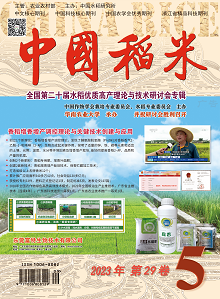In order to explore the effects of applying winter fallow weeds on yield of no-tillage rice under different nitrogen fertilizer levels, a field experiment was conducted using Y Liangyou 1 as the material in Pingtou Village, Yong’an Town, Liuyang City, Hunan Province. Yield and growth physiological characteristics were measured to value the effects of applying winter fallow weeds [W0, 0 kg/hm2; W1, 5 000 kg/hm2 (dry weight)] under different nitrogen application rates (N0, 0 kg/hm2; N150, 150 kg/hm2; N225, 225 kg/hm2). The results showed that compared with W0 treatment, W1 treatment increased the yield of no-tillage rice by 28.8% and 4.2% under N0 and N150 levels, the reason for increasing yield was the increase in effective panicles, spikelets per panicle, total spikelets, and thousand grain weight of rice. However, compared with W0 treatment, W1 treatment reduced the yield of no-tillage rice by 5.9% at N225 levels. Compared with the W0 treatment, W1 treatment increased the leaf area index, dry matter accumulation, radiation utilization efficiency, net photosynthetic rate, and SPAD value of mid to late stage rice, while also enhancing the transport capacity of rice leaves stems and sheaths and the harvest index at N0 and N150 levels. At N225 level, W1 treatment significantly increased the ineffective tillering of rice, decreased the panicle formation rate, and at the same time, decreased the transport capacity of leaf stems and sheaths, ultimately reducing the number of grains per panicle, total spikelets, and seed setting rate of rice. In summary, at low nitrogen levels (0-150 kg/hm2), applying winter fallow weed is beneficial for improving the yield of no tillage rice, while at high nitrogen level(225 kg/hm2), applying winter fallow weed reduced the yield of no-tillage rice.

